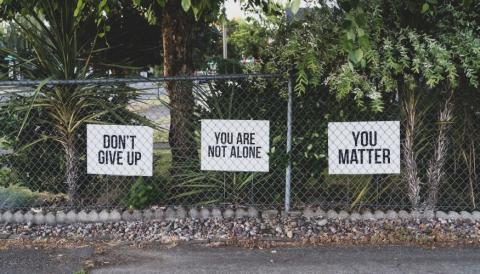COVID-19 isolation measures can elevate mental health risks

November 18, 2020
Quarantine and isolation measures are a critical tool in curbing the spread of COVID-19. But new analysis of data from a survey of the mental health impacts of the pandemic suggests we need to pay more attention to the unintended mental health consequences of these measures.
Researchers at UBC, in collaboration with the Canadian Mental Health Association, surveyed 3,000 adults across Canada and found that mental health generally worsened with the pandemic. However, people who spent time in voluntary self-isolation or mandated quarantine were among those who felt the impacts more keenly.
“Two out of five, or 37 per cent of participants reported having worse mental health after the pandemic started,” says research assistant Zachary Daly, with the UBC school of nursing. “But this rises to 54 per cent among those who had to isolate due to experiencing COVID-19 symptoms. Those who quarantined due to contact with someone with symptoms of COVID-19 experienced the highest rates of recent suicidal thoughts, at 28 per cent, compared to five per cent among those who have not had to quarantine or isolate.”
Just as concerning, individuals who were ordered to isolate because they experienced symptoms of COVID-19 were at greater risk for recent self-harm than those who have not had this experience. “This group had the highest rates for self-harm, at nine percent, compared to one per cent among those who have not had to quarantine or isolate,” added Daly.
In contrast, people who quarantined due to recent international or out of province travel did not have significantly worse mental health or elevated risks of suicidal ideation or self-harm.
“People who quarantine due to potential direct exposure are clearly dealing with greater levels of distress,” says principal investigator Emily Jenkins, an assistant professor of nursing at UBC.
“They aren’t necessarily having COVID-19 symptoms, but they may be very concerned about stigma should they have a positive result. They might also be afraid of being cut off from their friends and family, or being unable to provide care for people in their circle who may need it. The process of quarantining itself and the experience of being cut-off from others may also be contributing. We need to be responsive to these types of stressors when using quarantine and isolation measures to fight this pandemic,” said Jenkins.
This is the first Canadian study to look at the specific mental health impacts of different reasons for quarantine and isolation, and researchers say the results have implications for public health and health care.
“With COVID case numbers rapidly growing across the country, and the exponential increase in people who are having quarantine or isolation orders imposed on them, we’re really advocating for some shifts in the way things are done and the practices related to surveillance,” said Jenkins. “We want to make sure that there are strategies to mitigate some of the potential mental health harms associated with these measures.”
For example, if someone has been instructed to quarantine or isolate, health care providers can build mental health check-ins into the process, rather than waiting for the person to reach out, says Jenkins. Individuals who recently quarantined or isolated should receive a mental health assessment, as the emotional and psychological challenges can persist after the quarantine period is over.
Jenkins noted that notwithstanding the elevated risks for certain groups of individuals, the overall rates of self-harm and suicidal ideation were “quite high” for everyone.
“This has been a tough year and there are not yet signs of things easing up. The promising thing is that as we identify circumstances that may put people at risk, we can work to address these. It’s going to be more important than ever to protect Canadians’ well-being and manage the constant element of fear and uncertainty that people are experiencing,” added Jenkins.
Photo by Dan Meyers on Unsplash


